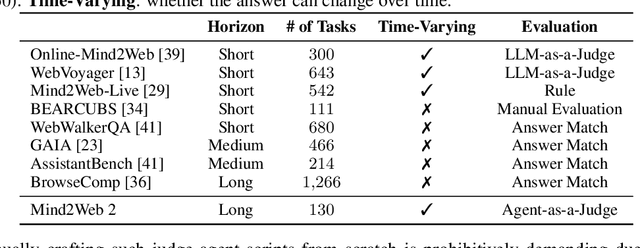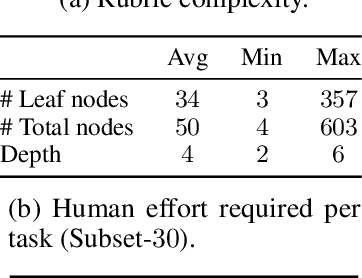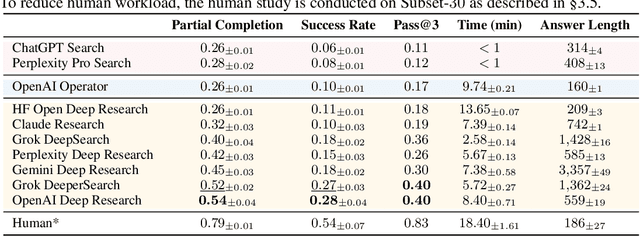Yu Gu
DAIEN-TTS: Disentangled Audio Infilling for Environment-Aware Text-to-Speech Synthesis
Sep 18, 2025Abstract:This paper presents DAIEN-TTS, a zero-shot text-to-speech (TTS) framework that enables ENvironment-aware synthesis through Disentangled Audio Infilling. By leveraging separate speaker and environment prompts, DAIEN-TTS allows independent control over the timbre and the background environment of the synthesized speech. Built upon F5-TTS, the proposed DAIEN-TTS first incorporates a pretrained speech-environment separation (SES) module to disentangle the environmental speech into mel-spectrograms of clean speech and environment audio. Two random span masks of varying lengths are then applied to both mel-spectrograms, which, together with the text embedding, serve as conditions for infilling the masked environmental mel-spectrogram, enabling the simultaneous continuation of personalized speech and time-varying environmental audio. To further enhance controllability during inference, we adopt dual class-free guidance (DCFG) for the speech and environment components and introduce a signal-to-noise ratio (SNR) adaptation strategy to align the synthesized speech with the environment prompt. Experimental results demonstrate that DAIEN-TTS generates environmental personalized speech with high naturalness, strong speaker similarity, and high environmental fidelity.
What-If Analysis of Large Language Models: Explore the Game World Using Proactive Thinking
Sep 05, 2025Abstract:Large language models (LLMs) excel at processing information reactively but lack the ability to systemically explore hypothetical futures. They cannot ask, "what if we take this action? how will it affect the final outcome" and forecast its potential consequences before acting. This critical gap limits their utility in dynamic, high-stakes scenarios like strategic planning, risk assessment, and real-time decision making. To bridge this gap, we propose WiA-LLM, a new paradigm that equips LLMs with proactive thinking capabilities. Our approach integrates What-If Analysis (WIA), a systematic approach for evaluating hypothetical scenarios by changing input variables. By leveraging environmental feedback via reinforcement learning, WiA-LLM moves beyond reactive thinking. It dynamically simulates the outcomes of each potential action, enabling the model to anticipate future states rather than merely react to the present conditions. We validate WiA-LLM in Honor of Kings (HoK), a complex multiplayer game environment characterized by rapid state changes and intricate interactions. The game's real-time state changes require precise multi-step consequence prediction, making it an ideal testbed for our approach. Experimental results demonstrate WiA-LLM achieves a remarkable 74.2% accuracy in forecasting game-state changes (up to two times gain over baselines). The model shows particularly significant gains in high-difficulty scenarios where accurate foresight is critical. To our knowledge, this is the first work to formally explore and integrate what-if analysis capabilities within LLMs. WiA-LLM represents a fundamental advance toward proactive reasoning in LLMs, providing a scalable framework for robust decision-making in dynamic environments with broad implications for strategic applications.
AURAD: Anatomy-Pathology Unified Radiology Synthesis with Progressive Representations
Sep 05, 2025Abstract:Medical image synthesis has become an essential strategy for augmenting datasets and improving model generalization in data-scarce clinical settings. However, fine-grained and controllable synthesis remains difficult due to limited high-quality annotations and domain shifts across datasets. Existing methods, often designed for natural images or well-defined tumors, struggle to generalize to chest radiographs, where disease patterns are morphologically diverse and tightly intertwined with anatomical structures. To address these challenges, we propose AURAD, a controllable radiology synthesis framework that jointly generates high-fidelity chest X-rays and pseudo semantic masks. Unlike prior approaches that rely on randomly sampled masks-limiting diversity, controllability, and clinical relevance-our method learns to generate masks that capture multi-pathology coexistence and anatomical-pathological consistency. It follows a progressive pipeline: pseudo masks are first generated from clinical prompts conditioned on anatomical structures, and then used to guide image synthesis. We also leverage pretrained expert medical models to filter outputs and ensure clinical plausibility. Beyond visual realism, the synthesized masks also serve as labels for downstream tasks such as detection and segmentation, bridging the gap between generative modeling and real-world clinical applications. Extensive experiments and blinded radiologist evaluations demonstrate the effectiveness and generalizability of our method across tasks and datasets. In particular, 78% of our synthesized images are classified as authentic by board-certified radiologists, and over 40% of predicted segmentation overlays are rated as clinically useful. All code, pre-trained models, and the synthesized dataset will be released upon publication.
SSG-Dit: A Spatial Signal Guided Framework for Controllable Video Generation
Aug 23, 2025Abstract:Controllable video generation aims to synthesize video content that aligns precisely with user-provided conditions, such as text descriptions and initial images. However, a significant challenge persists in this domain: existing models often struggle to maintain strong semantic consistency, frequently generating videos that deviate from the nuanced details specified in the prompts. To address this issue, we propose SSG-DiT (Spatial Signal Guided Diffusion Transformer), a novel and efficient framework for high-fidelity controllable video generation. Our approach introduces a decoupled two-stage process. The first stage, Spatial Signal Prompting, generates a spatially aware visual prompt by leveraging the rich internal representations of a pre-trained multi-modal model. This prompt, combined with the original text, forms a joint condition that is then injected into a frozen video DiT backbone via our lightweight and parameter-efficient SSG-Adapter. This unique design, featuring a dual-branch attention mechanism, allows the model to simultaneously harness its powerful generative priors while being precisely steered by external spatial signals. Extensive experiments demonstrate that SSG-DiT achieves state-of-the-art performance, outperforming existing models on multiple key metrics in the VBench benchmark, particularly in spatial relationship control and overall consistency.
Mind2Web 2: Evaluating Agentic Search with Agent-as-a-Judge
Jun 26, 2025



Abstract:Agentic search such as Deep Research systems, where large language models autonomously browse the web, synthesize information, and return comprehensive citation-backed answers, represents a major shift in how users interact with web-scale information. While promising greater efficiency and cognitive offloading, the growing complexity and open-endedness of agentic search have outpaced existing evaluation benchmarks and methodologies, which largely assume short search horizons and static answers. In this paper, we introduce Mind2Web 2, a benchmark of 130 realistic, high-quality, and long-horizon tasks that require real-time web browsing and extensive information synthesis, constructed with over 1,000 hours of human labor. To address the challenge of evaluating time-varying and complex answers, we propose a novel Agent-as-a-Judge framework. Our method constructs task-specific judge agents based on a tree-structured rubric design to automatically assess both answer correctness and source attribution. We conduct a comprehensive evaluation of nine frontier agentic search systems and human performance, along with a detailed error analysis to draw insights for future development. The best-performing system, OpenAI Deep Research, can already achieve 50-70% of human performance while spending half the time, showing a great potential. Altogether, Mind2Web 2 provides a rigorous foundation for developing and benchmarking the next generation of agentic search systems.
EULER: Enhancing the Reasoning Ability of Large Language Models through Error-Induced Learning
May 28, 2025Abstract:Large Language Models (LLMs) have demonstrated strong reasoning capabilities and achieved promising results in mathematical problem-solving tasks. Learning from errors offers the potential to further enhance the performance of LLMs during Supervised Fine-Tuning (SFT). However, the errors in synthesized solutions are typically gathered from sampling trails, making it challenging to generate solution errors for each mathematical problem. This paper introduces the Error-IndUced LEaRning (EULER) model, which aims to develop an error exposure model that generates high-quality solution errors to enhance the mathematical reasoning capabilities of LLMs. Specifically, EULER optimizes the error exposure model to increase the generation probability of self-made solution errors while utilizing solutions produced by a superior LLM to regularize the generation quality. Our experiments across various mathematical problem datasets demonstrate the effectiveness of the EULER model, achieving an improvement of over 4% compared to all baseline models. Further analysis reveals that EULER is capable of synthesizing more challenging and educational solution errors, which facilitate both the training and inference processes of LLMs. All codes are available at https://github.com/NEUIR/EULER.
Learning to Route Queries Across Knowledge Bases for Step-wise Retrieval-Augmented Reasoning
May 28, 2025Abstract:Multimodal Retrieval-Augmented Generation (MRAG) has shown promise in mitigating hallucinations in Multimodal Large Language Models (MLLMs) by incorporating external knowledge during generation. Existing MRAG methods typically adopt a static retrieval pipeline that fetches relevant information from multiple Knowledge Bases (KBs), followed by a refinement step. However, these approaches overlook the reasoning and planning capabilities of MLLMs to dynamically determine how to interact with different KBs during the reasoning process. To address this limitation, we propose R1-Router, a novel MRAG framework that learns to decide when and where to retrieve knowledge based on the evolving reasoning state. Specifically, R1-Router can generate follow-up queries according to the current reasoning step, routing these intermediate queries to the most suitable KB, and integrating external knowledge into a coherent reasoning trajectory to answer the original query. Furthermore, we introduce Step-wise Group Relative Policy Optimization (Step-GRPO), a tailored reinforcement learning algorithm that assigns step-specific rewards to optimize the reasoning behavior of MLLMs. Experimental results on various open-domain QA benchmarks across multiple modalities demonstrate that R1-Router outperforms baseline models by over 7%. Further analysis shows that R1-Router can adaptively and effectively leverage diverse KBs, reducing unnecessary retrievals and improving both efficiency and accuracy.
ConsRec: Denoising Sequential Recommendation through User-Consistent Preference Modeling
May 28, 2025Abstract:User-item interaction histories are pivotal for sequential recommendation systems but often include noise, such as unintended clicks or actions that fail to reflect genuine user preferences. To address this issue, we propose the User-Consistent Preference-based Sequential Recommendation System (ConsRec), designed to capture stable user preferences and filter noisy items from interaction histories. Specifically, ConsRec constructs a user-interacted item graph, learns item similarities from their text representations, and then extracts the maximum connected subgraph from the user-interacted item graph for denoising items. Experimental results on the Yelp and Amazon Product datasets illustrate that ConsRec achieves a 13% improvement over baseline recommendation models, showing its effectiveness in denoising user-interacted items. Further analysis reveals that the denoised interaction histories form semantically tighter clusters of user-preferred items, leading to higher relevance scores for ground-truth targets and more accurate recommendations. All codes are available at https://github.com/NEUIR/ConsRec.
Mitigating Audiovisual Mismatch in Visual-Guide Audio Captioning
May 28, 2025Abstract:Current vision-guided audio captioning systems frequently fail to address audiovisual misalignment in real-world scenarios, such as dubbed content or off-screen sounds. To bridge this critical gap, we present an entropy-aware gated fusion framework that dynamically modulates visual information flow through cross-modal uncertainty quantification. Our novel approach employs attention entropy analysis in cross-attention layers to automatically identify and suppress misleading visual cues during modal fusion. Complementing this architecture, we develop a batch-wise audiovisual shuffling technique that generates synthetic mismatched training pairs, greatly enhancing model resilience against alignment noise. Evaluations on the AudioCaps benchmark demonstrate our system's superior performance over existing baselines, especially in mismatched modality scenarios. Furthermore, our solution demonstrates an approximately 6x improvement in inference speed compared to the baseline.
X-Reasoner: Towards Generalizable Reasoning Across Modalities and Domains
May 06, 2025Abstract:Recent proprietary models (e.g., o3) have begun to demonstrate strong multimodal reasoning capabilities. Yet, most existing open-source research concentrates on training text-only reasoning models, with evaluations limited to mainly mathematical and general-domain tasks. Therefore, it remains unclear how to effectively extend reasoning capabilities beyond text input and general domains. This paper explores a fundamental research question: Is reasoning generalizable across modalities and domains? Our findings support an affirmative answer: General-domain text-based post-training can enable such strong generalizable reasoning. Leveraging this finding, we introduce X-Reasoner, a vision-language model post-trained solely on general-domain text for generalizable reasoning, using a two-stage approach: an initial supervised fine-tuning phase with distilled long chain-of-thoughts, followed by reinforcement learning with verifiable rewards. Experiments show that X-Reasoner successfully transfers reasoning capabilities to both multimodal and out-of-domain settings, outperforming existing state-of-the-art models trained with in-domain and multimodal data across various general and medical benchmarks (Figure 1). Additionally, we find that X-Reasoner's performance in specialized domains can be further enhanced through continued training on domain-specific text-only data. Building upon this, we introduce X-Reasoner-Med, a medical-specialized variant that achieves new state of the art on numerous text-only and multimodal medical benchmarks.
 Add to Chrome
Add to Chrome Add to Firefox
Add to Firefox Add to Edge
Add to Edge